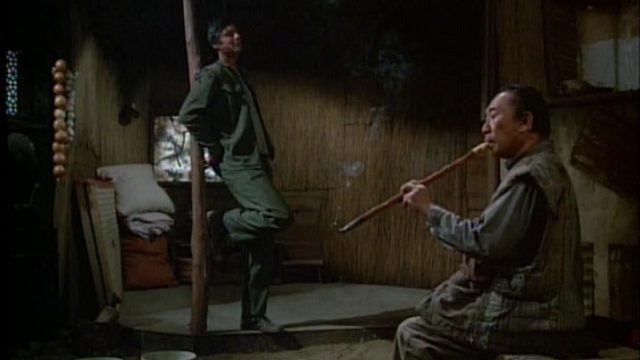It is depressingly difficult to find images of Philip Ahn the way I remember him. Admittedly this is because the episode I mostly remember him from is called “Hawkeye,” and go on, you search for something simply called “Hawkeye.” And of course there’s no character name; searching “Hawkeye father” brings up images from the two episodes Robert Alda did, which, you know, fair. It’s not that I don’t understand. It’s that Philip Ahn was a talented actor with a long, varied career, and no one really seems to remember he even existed.
Ahn appears to have been the first American-born child of two Korean parents. In fact, his father was Korean independence advocate Ahn Changho, who among other things may have written the South Korean national anthem. (It turns out its authorship is a matter of much debate.) His father was so important to the Korean independence movement that, when he died, attendance at his funeral was limited by the occupying Japanese. Young Philip—an Anglicization of “Pil Lip,” his Korean name—was part of the movement in the US, but what he really wanted to do was act.
He went to USC as a returning student, at age 29, and studied acting and cinematography. He then dropped out and went to work as an actor. This being the lead-up to World War II for the US, he played a lot of Japanese characters. Evil ones, of course. Indeed, vast amounts of his career were playing Japanese and Chinese characters. However, he does also appear to have been the first Korean-American actor to play a Korean character in the US. He would befriend Anna May Wong and Richard Loo, being part of the Asian-American acting community, which seems to have been fairly close-knit at the time.
And, yeah, if you know East Asian naming conventions, a lot of Japanese and Chinese characters. I mean, you don’t have to be an expert to realize that Mao Tse Tung was not Korean. And “Old Chinaman” in the breathtakingly racist The World’s Greatest Athlete, fine. But there’s also a lot of variations on “Wong.” And of course Master Kan on Kung Fu. But you get the odd Nakamura, Takamoto, and Shimizu. If you know what to look for, you can see a Vietnamese character—and even, I’m pretty sure, one from India. Oh, look, it’s Hollywood in the mid twentieth century. And even now, really.
And, yes, three Korean characters on three episodes of M*A*S*H, which has got to have been a lot better for him than appearing as a Shinto priest in a John Ford “docudrama,” italics from IMDb, during World War II. What I find interesting, however, is that he considered going to South Korea around the time of the actual Korean War to get involved in their film industry. After all, he had the experience and the knowledge, and he could bring what he’d learned to Korea. However, he ended up deciding against it. Due to his father’s time away from the family and early death, he’d ended up learning most of his Korean from his mother. Who in addition to speaking with archaic vocabulary also had a strong North Korean accent. Which I guess could’ve gotten him more villain roles?

